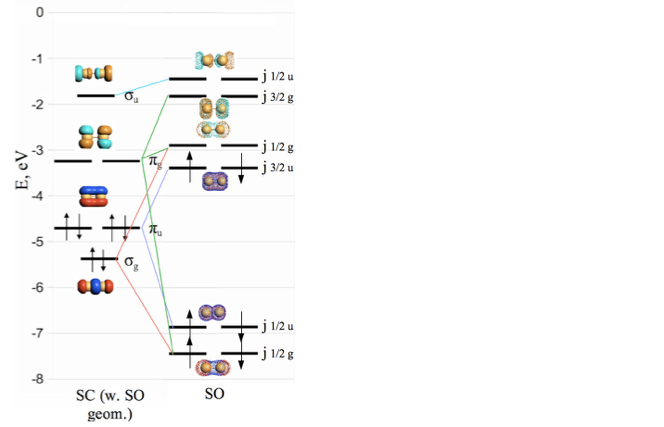Effects of relativity on superheavy dimers
Relativistic effects play important roles in the properties of superheavy element dimers. Because no experiment has been performed so far on a system with more than one superheavy atom simultaneously, computational studies are presently the only way to investigate these systems. In a recent paper, Dr. Michiko Atsumi studied bonding in homonuclear dimers made up of elements from Nh to Og. To assess the influence of relativistic effects, the author compared results from non-relativistic, scalar relativistic and full two-component spin-orbit ZORA models. Bond lengths and the orbitals making up the bonds were the focus. Furthermore, the moscovium dimer was studied in details as this system would expect to have pure π bonding under p3/2 jj-coupled state. This idea is based on the facts that moscovium is the homologue of bismuth and the bismuth dimer is well known for a similar π bond. The author found that the calculated bond lengths for the dimer Nh-Og with and without relativistic effects are comparable enough to other accurate methods. In all cases, the relativistic bonds have a substantial π character and sometimes also σ character.

Non-relativistic, scalar relativistic and full two-component spin-orbit ZORA models are all available in ADF. Moreover, ADF can decompose double group two-component spinors into single group components for a better understanding of the bonding. You can find more detail in the tutorial on TlH spin-orbit coupling.
Michiko Atsumi, Effects of relativity on the superheavy dimers M2, M = Nh-Og, New J. Chem., 2023, Advance Article
Key conceptsADF heavy elements Relativistic DFT